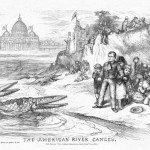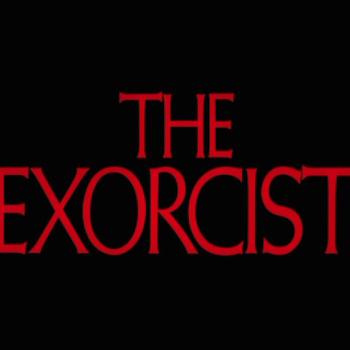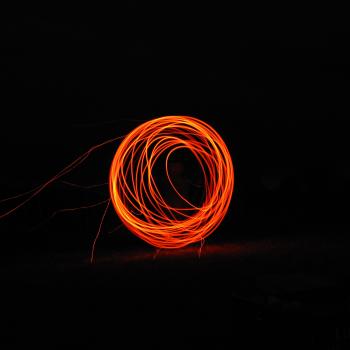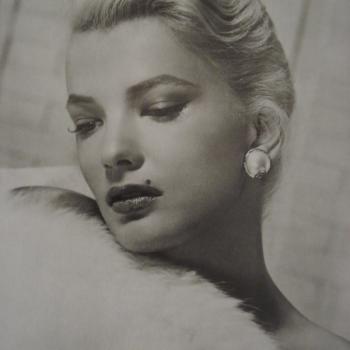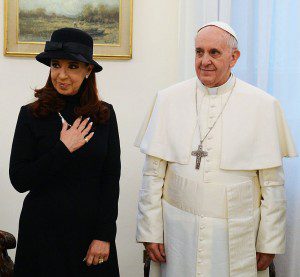
It’s not uncommon for me to see the pope addressed on social media: Facebook conversations, Twitter repartee (less so), and all manner of other places, including in my own Messenger inbox. Some people earnestly seek clarification; others discern the demonic (or some such) at work behind the bright eyes of an 80-year-old Jesuit. Regardless, it seems what is most needed is clarification, something undertaken long ago, but seemingly (and understandably) forgotten.
These days many a Catholic applies that approach so hated as nothing more than academic gobbledygook—the hermeneutics of suspicion—to the pope as if a deviant (and deeply Fruedian) unconscious were at work within the pontiff’s head. But most of their questions—really most of their assumptions—were addressed way back when the pope was first elected and in the months and years thereafter. Newsweek, the Atlantic, PRI, the Washington Post, and the New Yorker all have published pieces on the pope’s past and what that past might mean for the present and the future. Therein lie the keys to understanding his attacks on unfettered capitalism, his denouncements of “rigidity,” and most everything else that raises American eyebrows.
In order to understand the pope, in order to clarify what he means to mean, we must revisit Pope Francis as an Argentine Jesuit and product of mid-century Latin America.
The Supreme Pontiff grew up in a fairly-lower-class, immigrant neighborhood in Buenos Aires; his initial experience of Catholicism was colored by his grandmother—Nonna Rosa—whose folksy love of novenas and processions left a deep imprint on young Jorge. His theological studies were initially opposed by his mother, who wanted him to study something more practical (and likely also more lucrative). Such formed the background of his entry into the Jesuits.
His boyhood was colored (especially due to his involvement in Catholic Action, an organization his beloved grandmother had supported in Italy) by Peronism, which was considered to have an affinity with Catholicism. A sort of “Third Way” approach, it combined authoritarian tendencies, a robust welfare state, and nationalism. The Encyclopædia Britannica traces the movement thus:
The Peronist movement arose as the personal following of Col. Juan Perón. In 1943, after participating in a successful military coup, Perón became Argentina’s minister of labour, a position through which he enacted various social measures to help the country’s growing class of urban industrial workers. Gaining the admiration of the masses, Perón called for the state to take a leading role in the economy to ensure cooperation between businesses and labour. In 1946 he was elected to the presidency with the strong support of the workers and their labour unions; he also gained the support of many lower-middle-class citizens and of the country’s industrialists. After Perón was overthrown and exiled in 1955 by the military, the leaderless Peronist movement was weakened by factional conflicts, since it was composed of many divergent elements, from left-wing trade unionists to right-wing authoritarian nationalists. Nonetheless, the movement remained the main civilian contender for power in Argentina.
Pope Francis became a Jesuit novice in 1958, in other words just after the downfall of Peronist supremacy. Combined with his early involvement in Catholic Action and the continuing influence of the ideology (something that is still the case today), it seems to have exerted a good deal of force on his worldview. As stated above, the movement fractured into Left- and Right-wing varieties, which soon, within Catholic circles, aligned with similar ideological developments after Vatican II. In other words, the political break within Peronism and the theological complexities in the aftermath of the Second Vatican Council must be attended to if Pope Francis is to be understood.
At 36, he became Jesuit Provincial for Argentina and Uruguay. The moment was filled with divisiveness. On the one hand, the advent of Liberation Theology; on the other, the emergence of Argentina’ Dirty War, during which 10,000 people were killed, and many others “disappeared.” Jorge Bergoglio was brought in as provincial specifically to replace Ricardo O’Farrell, a generally Left-leaning Jesuit. The future pope, in short, was seen as a conservative.
And rule as a conservative he did. Paul Valley, writing in the Atlantic, puts it well:
As polarization grew between an atheist, anti-Church Left and a right wing that claimed to be acting in defense of the Church and its values, Bergoglio found that it was impossible to hold to a middle way. He cracked down on Liberation Theology inside the Jesuits. Progressives within the order accused him of de-facto collusion with the worldview of the Right, if not with its tactics. Looking back he admitted, in his first interview as pope: “I had to deal with difficult situations, and I made my decisions abruptly and by myself. My authoritarian and quick manner of making decisions led me to have serious problems and to be accused of being ultra-conservative.”
A titanic struggle for the soul of Catholicism ensued. Bergoglio had strong support within the Jesuits when he became provincial superior in 1973. But by the time he ended his leadership role as rector of Buenos Aires’s Jesuit seminary in 1986, those who loathed him had begun to outnumber those who loved him. By 1990, his support within the order had been eroded by his authoritarian style and his incorrigible inability, in the words of the Jesuit, Father Frank Brennan, “to let go the reins of office once a [Jesuit] provincial of a different hue was in the saddle.” Another senior Jesuit told me: “He drove people really crazy with his insistence that only he knew the right way to do things. Finally the other Jesuits said: ‘Enough.’”
By the time he was sent into exile, according to one senior Jesuit in Rome, around two-thirds of Argentina’s Jesuits had lost patience with him. In his first interview after becoming pope, Francis attributed this dynamic to his own “style of government as a Jesuit at the beginning. … I found myself provincial when I was still very young. I was only 36 years old. That was crazy.” As a young priest in powerful leadership positions, Bergoglio did not have the maturity he needed to cope with the competing pressures of Jesuit factions, the Vatican, and a ruthless military dictatorship.
The pope has since lamented that he did not do enough during Argentina’s Dirty War. He cast aside two priests who took theology to the slums; they were kidnapped and tortured not long after he took away their faculties to say Mass. He hid some books for an old mentor and sometime radical, Ester Ballestrino. She helped to found “Las Madres de la Plaza de Mayo,” a group for the mothers of those who had been “disappeared.” They would march with the pictures of their children. One day she herself simply disappeared, dropped, still alive after being drugged, into the Atlantic Ocean. To this day, if his 2010 testimony on the matter is to be believed, his lack of action causes him immense pain.
Feeling the sting of failure and the imprudence of his youth, he was exiled, first to Germany and then to the distant, inland city of Córdoba. In the former, he fell in love with a painting of Mary, Untier of Knots, specifically related to the Blessed Mother’s intercession in the failing marriage of a noble couple. In the latter, he was not allowed to say Mass in the Jesuit Church, and so he spent much time doing two things: hearing confessions and walking. This seems to have transformed him. Again, from the Atlantic:
In Cordoba, Bergoglio turned inward. His main public spiritual engagement was hearing confessions. He spent a lot of time looking out the window and walking the streets, from the Jesuit residence to the church along a road that passed through many different areas of the city. People from all walks of life—academics, students, lawyers, and ordinary folk—visited the church for the penitential sacrament. He found his interactions with the poor particularly moving.
“Cordoba was, for Bergoglio, a place of humility and humiliation,” said Father Guillermo Marco, who was later Bergoglio’s right-hand man on public affairs in the diocese of Buenos Aires. There seems to have been more to this than learning from experience. Francis later admitted to having made “hundreds of errors” in his time as leader of Argentina’s Jesuits. Cordoba was, he revealed in his first interview as pope, “a time of great interior crisis.”



